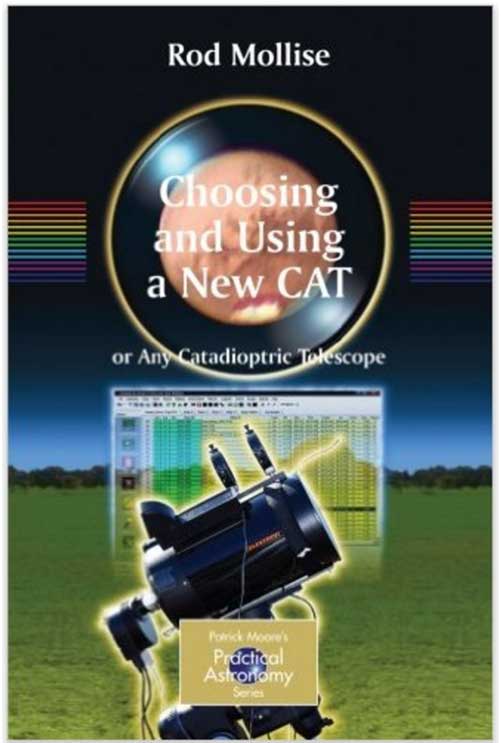Rod Mollise "Uncle Rod" - Astronomer Profile
Feb 19, 20161. How long have you been a stargazer, and what inspired you to get into stargazing?
This one is a difficult question to answer, since I can't really remember a time I wasn't interested in the Great Out There. However, my first memory of owning any sort of astronomical gear goes back to when I was four or five, when my parents bought me a book with a little planisphere bound into it. I was excited and anxious to get outside and try my "star wheel," but don't remember anyone ever actually taking me out under the night sky so I could use it. That was the genesis of my ongoing amateur astronomy gear-lust, though.After that, flash forward to the 4th grade. I don't know if show-and-tell is something that's still done in elementary schools, but it was popular in those days of yore, giving both us and the teacher a break from our normal routine of studying the multiplication tables between duck and cover air-raid drills. It went like this: you brought an item to school (a toy, a book, even a pet), stood up in front of the class and gave a short talk about your item. Over fifty years later, I have no idea what I brought to show and tell on that day, but I do remember with crystal clarity my classmate Stephanie's presentation.
Stephanie usually brought cool stuff, but what she had this time was way beyond cool. Perched on a spindly black tripod was a gleaming white tube. Almost instinctively, I knew it was a telescope, a telescope for looking at the stars—not a dime-store spyglass you used for playing pirate. I couldn't figure out how you looked into it, though, since the "eye thing" seemed to be on the wrong end.
Stephanie explained this was a special sort of a telescope, a reflecting telescope, which used a mirror instead of a lens. She went on to reveal that she and her father had actually used this A.C. Gilbert (once a big name in kids' microscopes, telescopes and chemistry sets) to see the craters of the Moon. Imagine that. They could actually look at Moon craters. Any time they wanted!
All I knew was that I had to have one of these little 2-inch Gilberts. Understand me: not just something I wanted, something I had to have. I never was able to convince Mama and Daddy to shell out the considerable amount (by the day's standards) required so I could have my own Gilbert. But I didn't stop bugging them about telescopes, and a year later Daddy came home from work one afternoon bearing a 3-inch Tasco reflector he'd rescued from a Pawn shop.
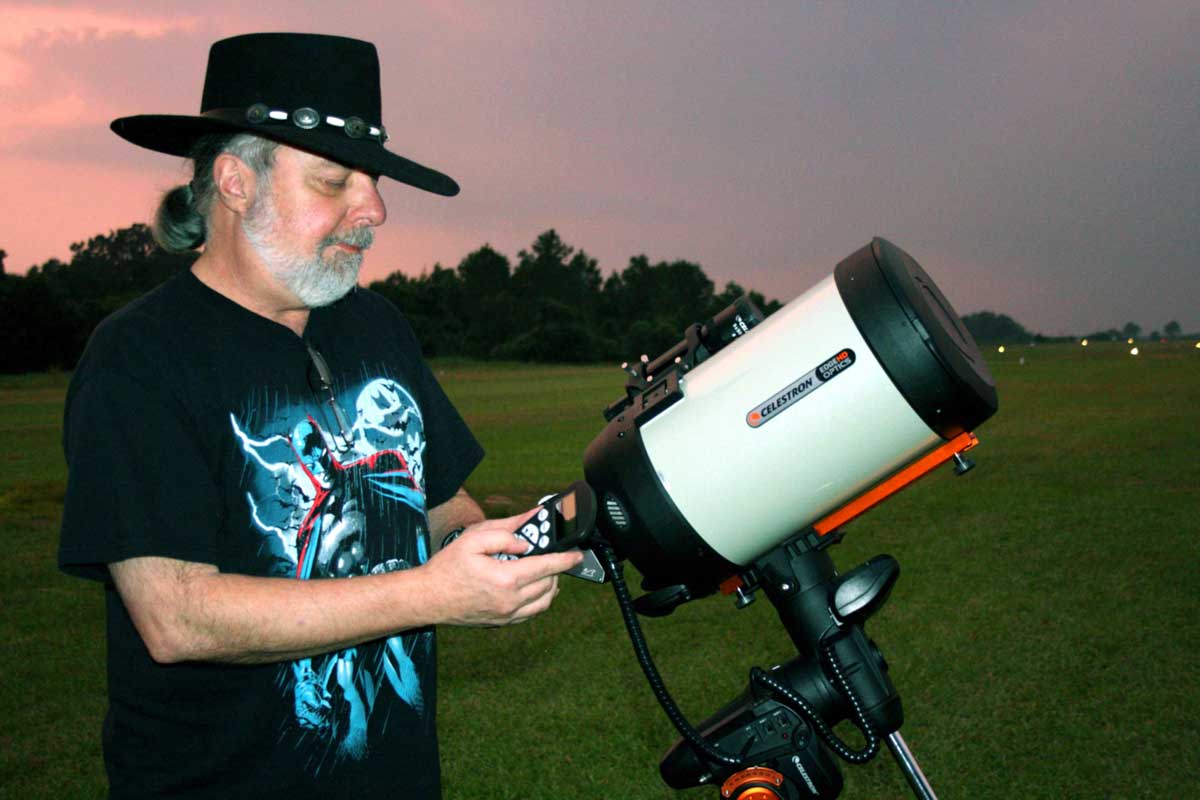 Rod Mollise.
Rod Mollise.2. What was your first telescope? Do you still have it?
The poor little Tasco—which was OK on the Moon, lousy on the planets, and bearable on the few deep-sky objects I could find—has been gone a long time. I had to sell it, since 1966 found me suffering from a bad case of the dreaded aperture fever. One of Daddy's co-workers (he was a broadcast engineer at a local TV station) had bought his son a 4.25-inch Edmund Scientific "Palomar Junior" reflector in ‘66. Unfortunately, the boy really wanted a go-cart. His mama sided with sonny, so that telescope had to go. Daddy offered him 60 bucks for it, which he quickly accepted. Trouble for us was finding those 60 bucks. The 3-inch was sold for 15 dollars, about what it was worth, to finance the P.J. So I don't have my first scope, but I do still have my second telescope. I've somehow hung onto it through thick and thin..3. Are you mostly a visual observer, or are you an imager?
While I still do and probably always will do some visual observing, in the last six to seven years I've mostly focused on picture taking. From 2009 – 2012, I was using Stellacam and Mallincam video cameras to support my quest to view and image all 2500 Herschel objects. Since then, I've been doing guided deep-sky photography with a DSLR. While I have an SBIG CCD, it's just so much easier to get nice color pictures with my Canon cameras. Given my modest skills and skies, I am not going to be another Robert Gendler, so the DSLRs suit me perfectly.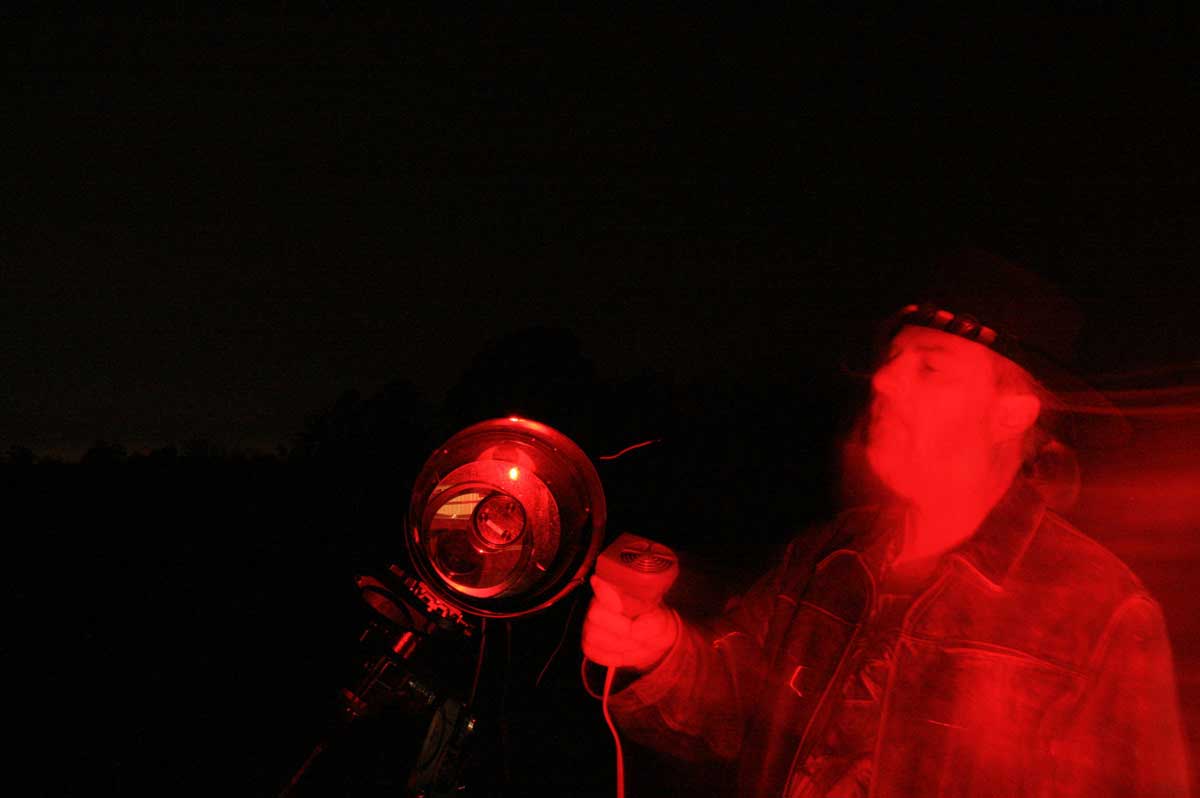
4. Where do you do most of your observing these days? I am lucky to live in the suburbs—I moved from my downtown digs two years ago—and I make do most of the time with a sky that has a zenith limiting magnitude of about 5.0. It's hardly perfect, but I can image some fairly dim targets nevertheless. I've often dreamed of building an observatory, but I haven't done that yet. Maybe in part because I can leave a telescope set up in my secure backyard for days and days. I run the scope from a laptop PC on a table on my deck and at the end of the evening I cover the scope with a good cover. Not quite as nice as having a dome or a roll-off roof observatory, but certainly cheaper and maybe more practical for me at this time.
5. How do you usually plan a night's observing?
One thing I preach to novices is this: "If you go outside without an observing list, you won't see much." I always have a list, even for informal visual runs. How do I make a list? I used to grab my copy of Burnham's Celestial Handbook and a stenopad and pencil and have at it. These days, however, I make my lists with two outstanding observing planner (computer) programs, SkyTools 3 and Deep Sky Planner 6. Much quicker and easier than thumbing through Burnham's in search of good stuff.6. You wrote the book on choosing and using Schmidt-Cassegrain (SCT) and Maksutov-Cassegrain (MCT) telescopes and you've long expounded on the versatility of these instruments. But you've been using refractors a lot lately both for imaging and visual observation. What's the attraction of refractors?
I still use SCTs, but there is no doubt I am not as obsessed with them as I used to be. I recently got rid of three C8s, and it is possible—but not yet definite—that my carbon fiber C11 will go up for sale soon. I do intend to keep my Edge 800 C8; it's a good telescope and perfect for when I want to do deep-sky video. Why have refractors broken up my happy SCT home? Perhaps because I don't need the SCTs' versatility anymore, being focused as I am on one pursuit.That one pursuit is deep-sky imaging, which means there's no reason not to use a refractor. My 5-inch and 80mm APOs are so much easier to handle than a C8 for picture taking. There is no mirror flop and no focus shift. Even the 5-inch has a moderate focal length, less than 1000mm, so it is easier to guide than even a focal-reduced C8. Yes, sometimes I still long for the visual reach of the C11, but my "big" 6-inch achromatic refractor shows a lot and is easier to transport and mount than a C11. I am willing to give up a few faint fuzzies for that now.
7. Can you share one of your most memorable experiences as a stargazer?
I've seen many strange and wonderful things over the years, but my fondest memories have to do with the people I've spent time with under the stars. One memory that comes to mind is the night my old friend David Levy and I stood out under a nearly perfect desert sky at the Texas Star Party. David has pretty much seen it all over his years as a powerhouse of a comet hunter, deep sky observer, and the dean of amateur astronomy writers, and it was wonderful to see how enthusiastic he still was. "Rod, the Milky Way looks almost as good as it did when I was a kid in Canada! No, better!"8. What's your favorite type of object to observe or image?
To some extent that depends on the time of year and, especially, observing conditions. I am somewhat limited at home—though I was recently able to snag a pretty good image of the Pacman Nebula (NGC 281 in Cassiopeia). When I think about it, though, I suppose my favorite objects, or at least those that are to me the most photogenic, are globular star clusters. I never tire of imaging or observing them.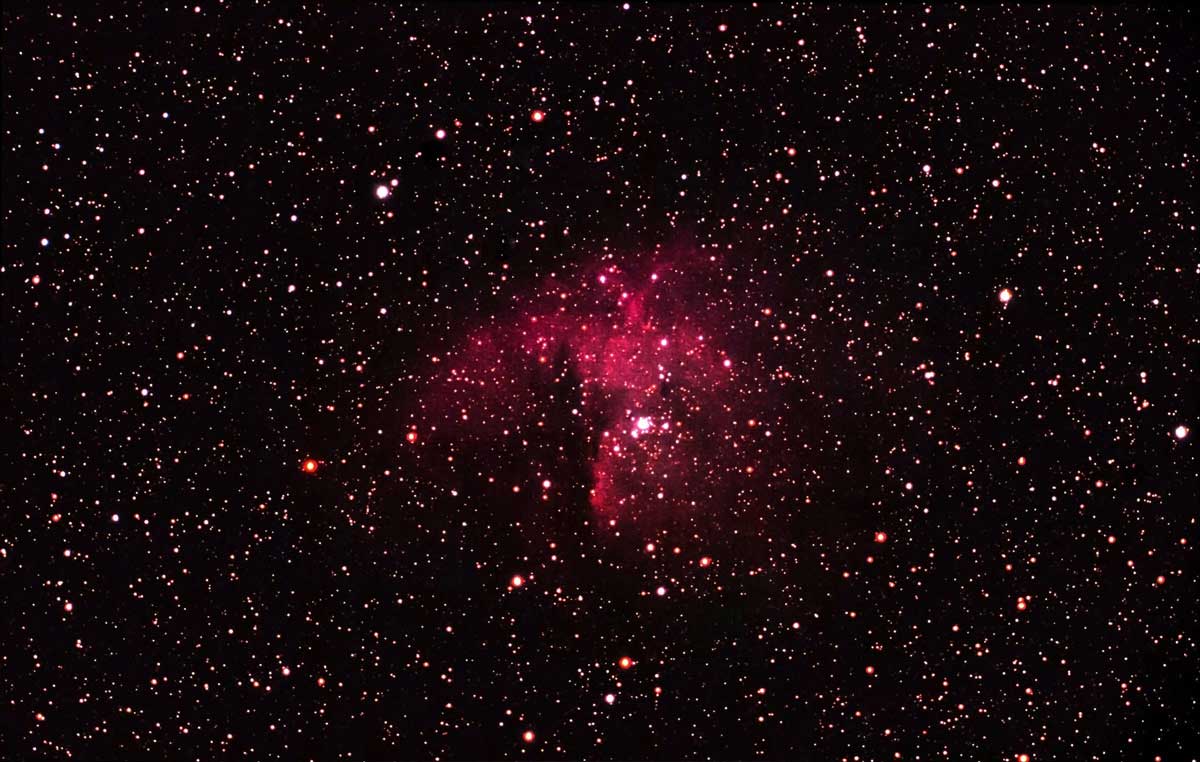 Pacman Nebula. Photo Credit: Rod Mollise.
Pacman Nebula. Photo Credit: Rod Mollise.9. What's a deep-sky object that you've yet to see but really want to?
After half a century in the game, there aren't many I've missed. We are kinda scraping the bottom of the barrel now. One of my more recent projects, for example, was (video) imaging quasars down to magnitude 17. I suppose that if there is one fuzzy I ought to pursue either with a camera or someone's big Dobsonian, it is Einstein's Cross. I've captured the Twin Quasar both visually and with video, but haven't dared the Einstein challenge yet.10. I understand you're retired now, but what did you do in your non-stargazing life?
I spent 30 years as an engineer working with the U.S. Navy, mostly on the AEGIS Project as a Navigation Systems Engineer. I was lucky in that I was able to retire earlier than most people can, I suppose, but I am frankly still adjusting to the new life. There are plenty of hours to fill, but I've got a couple of things to occupy some of them. I teach part time for the Physics Department at the University of South Alabama—which gets me out of the house once a week, thank God. There's also my writing for Sky & Telescope as a Contributing Editor, which has become more frequent. I also continue my other hobby, which I've been doing as long as I've been doing amateur astronomy, comic book collecting. I go to the movies, visit my favorite sports bar every Monday evening, and continue trying to find my way in this new stage of life. Oh, and of course I still dream about new astronomy gear even if, realistically, I know I don't need it.11. Have you got one or two tips for beginning stargazers?
Just one: "Don't make amateur astronomy a job. If it's not fun, don't do it, or at least find a different way to do it."12. Professional astronomy seems to be in a golden age. But does it seem to you that amateur stargazers are on balance getting older, with fewer younger people taking up the pastime these days? If so, what can be done about this?
A lot of people in our community worry about that, but it was much the same in the 1960s. Sure, with the Space Race in high gear, plenty of kids were interested in "space," but when it came to real amateur observers, most were older. I am more focused, frankly, on our need to bring more women and minorities into our avocation. I believe that is the key to the continued growth and health of amateur astronomy.13. Where can we read your writings, both online and in print?
I appear pretty regularly in Sky & Telescope magazine. I've also written a couple of popular books including Choosing and Using a New CAT which has become the standard reference for those kinds of telescopes, and The Urban Astronomer's Guide which was written to help the majority of amateurs who must observe from light-polluted urban and suburban sites. You can also catch new editions of my blog every Sunday morning at http://uncle-rods.blogspot.com/14. Thank you for sharing your views with the Astronomy Connect community!
Thanks for giving me the chance to participate and contribute to Astronomy Connect. I'm flattered, especially since I am a big fan of Agena AstroProducts!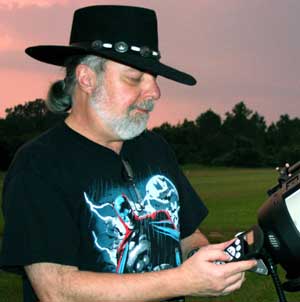 About Rod Mollise
About Rod Mollise
Rod Mollise is a familiar face to many amateur astronomers. The author of numerous magazine articles on every aspect of amateur and professional astronomy, Rod has also written two popular guide books, Choosing and Using a New CAT and The Urban Astronomer's Guide, both published by Springer. Rod is a contributing editor at Sky and Telescope magazine where his work appears regularly. He is also an editor of the acclaimed Journal of Double Star Observations. Rod is no stranger to internet astronomy, either, and contributes to many online astronomy forums and publishes an article each Sunday at his personal website Uncle Rod's Astro Blog. He lives and observes under reasonably dark suburban skies near Mobile, Alabama.
***
This article is © AstronomyConnect 2016. All rights reserved. Images © Rod Mollise 2016. All rights reserved.
Dismiss Notice
New Cookie Policy
On May 24, 2018, we published revised versions of our Terms and Rules and Cookie Policy. Your use of AstronomyConnect.com’s services is subject to these revised terms.
